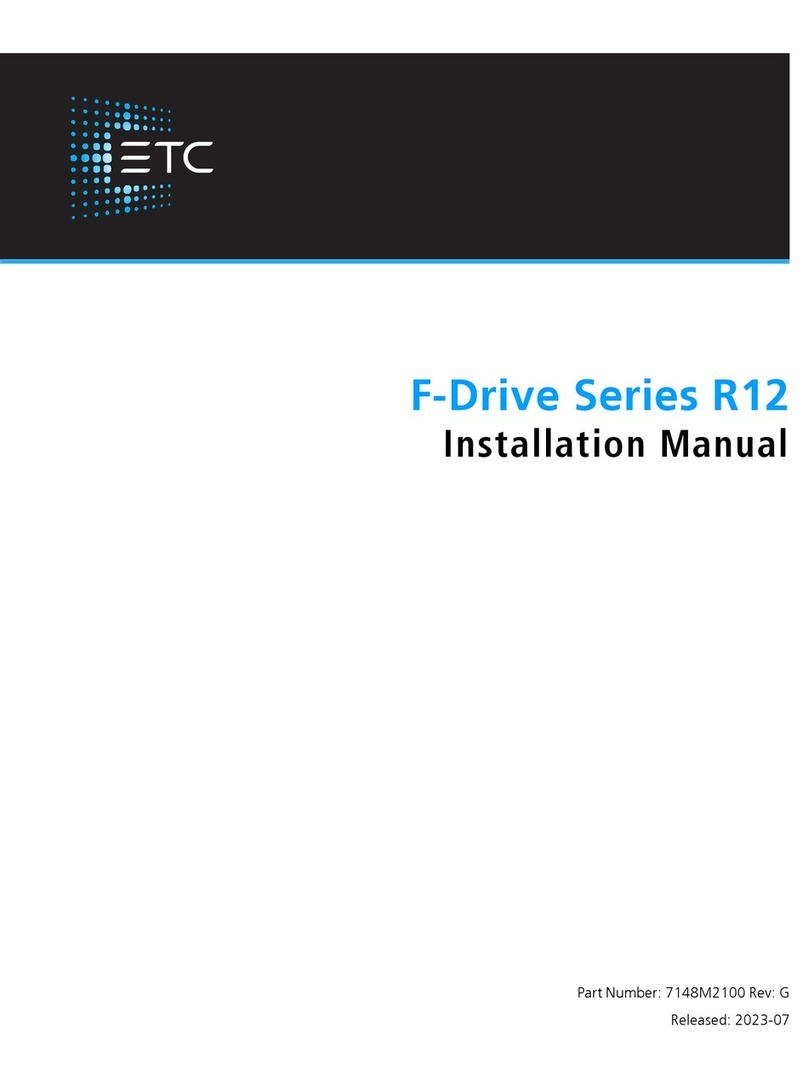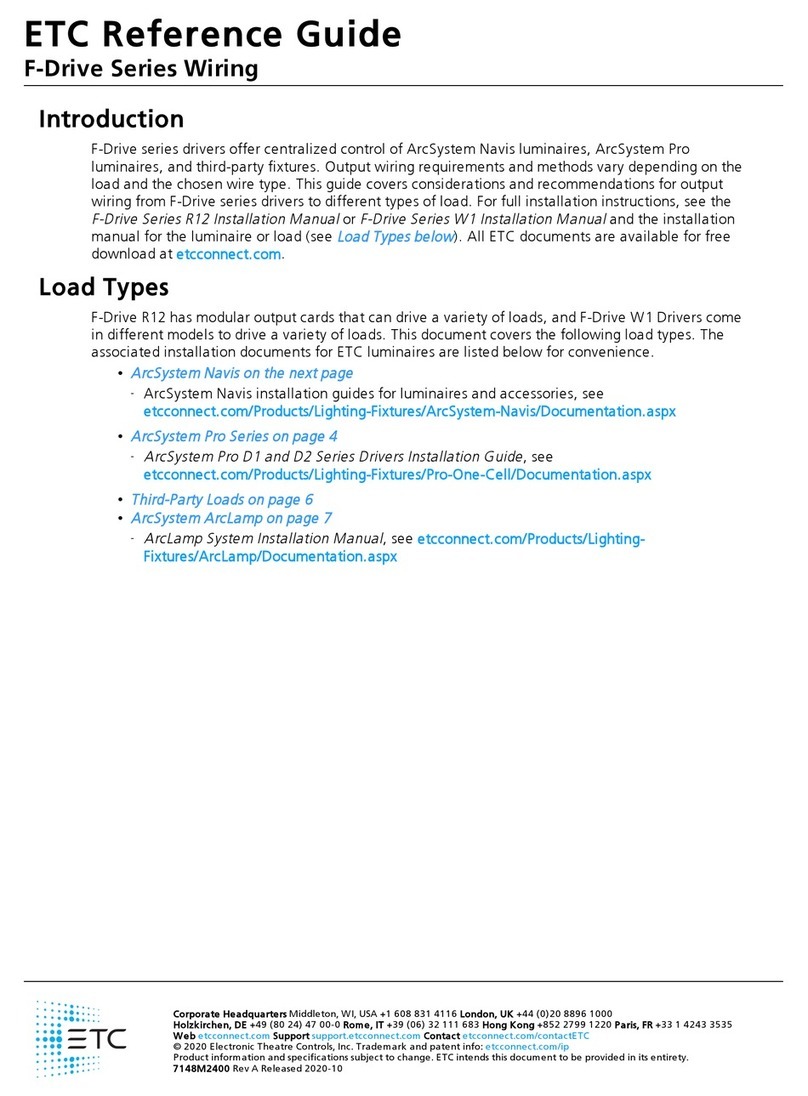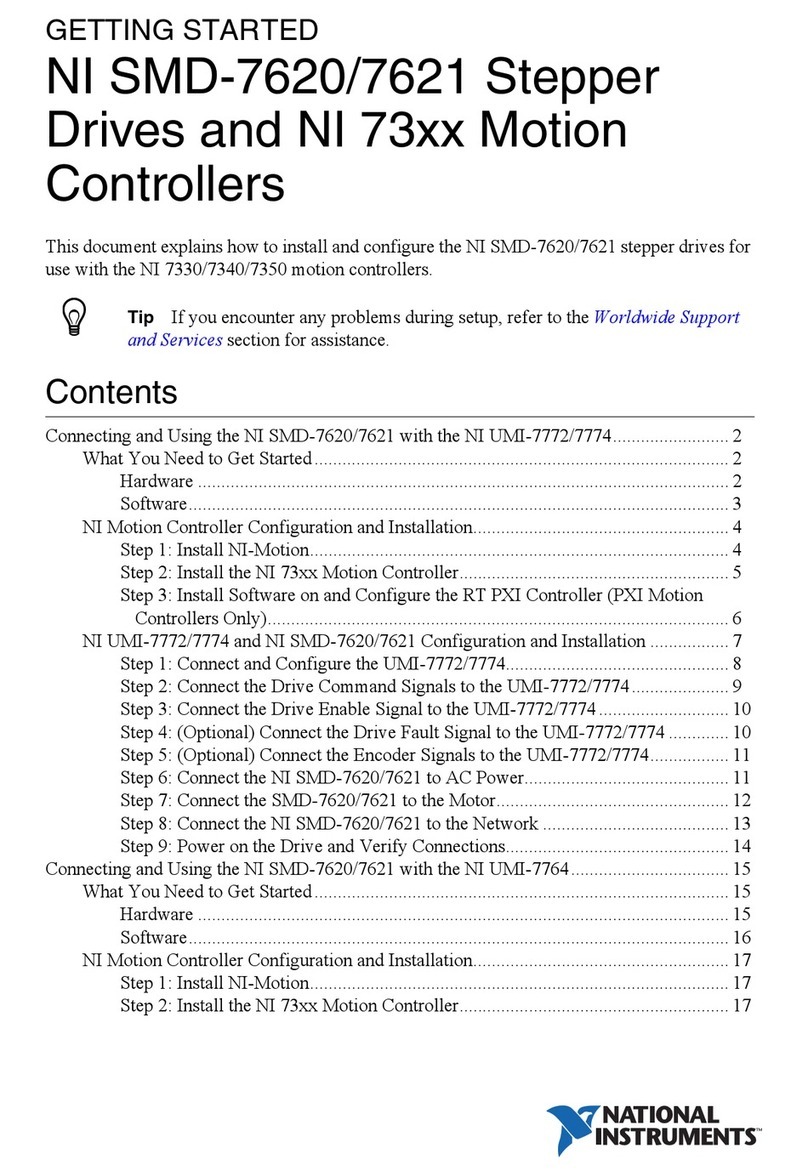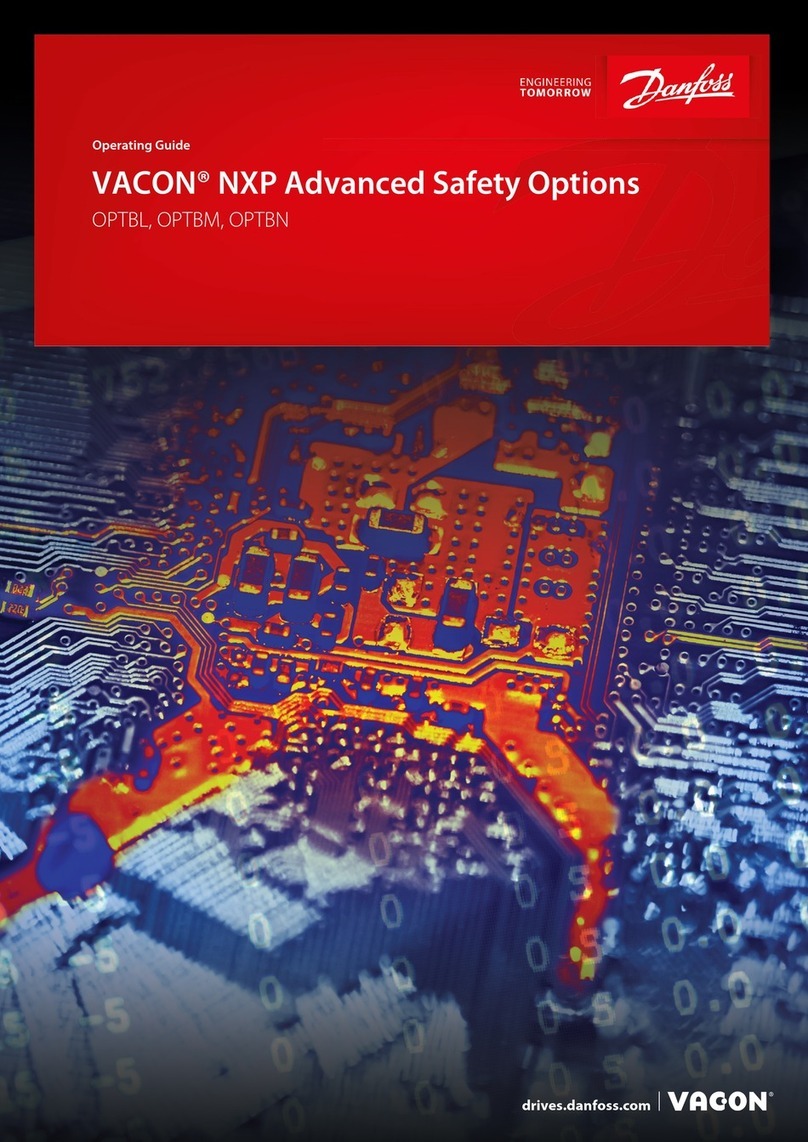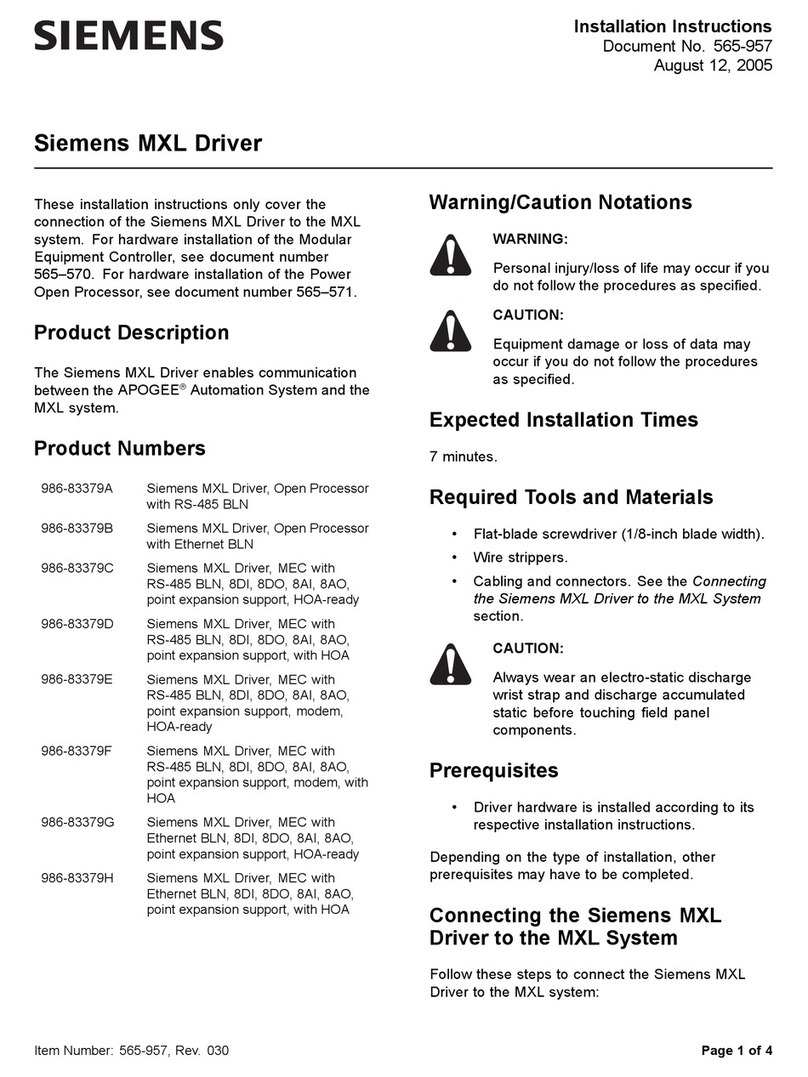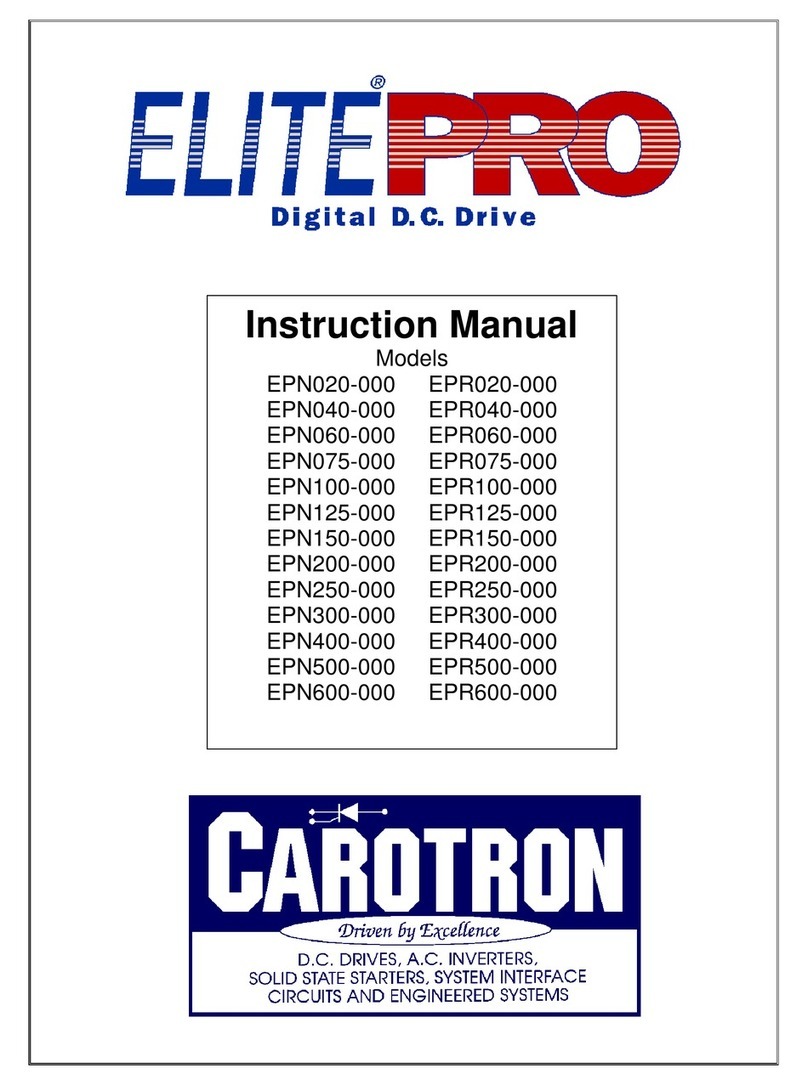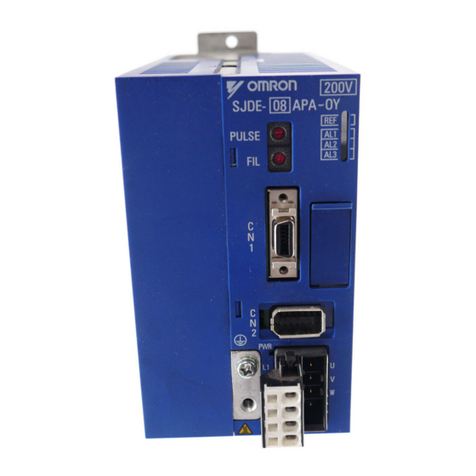ETC ArcSystem Pro D4 Series User manual

ArcSystem Pro D4 Series Drivers
Installation Guide
Part Number: 7490M2170 Rev: F
Released: 2023-02

Table of Contents
Table of Contents i
Introduction 1
Document Conventions 1
Help from ETC Technical Services 2
Safety 3
Label Symbols 3
Chapter 1 System Overview 4
ArcSystem Pro One-Cell and Pro One-Cell Small
Luminaires 4
Third-Party Fixtures 4
D1 Series, D2 Series, and D4 Series Drivers 5
TX1 Transmitter 6
ArcMesh 6
ArcMesh Specifications 7
Emergency System Overview 7
Before You Begin Installation 9
Power Disconnect Device 9
Site Survey for Wireless Installations 9
Installation Requirements 9
Chapter 2 Preparing the Ceiling for Recessed
Luminaires 11
Extension Cables 12
Chapter 3 D4 Series Wall-Mount Driver Installation 13
Electrical and Wiring Specification 13
Wire and Terminal Specifications 14
Prepare for Wall-Mount Installation 15
Wall-Mounting Supplies 15
Wall-Mount the Driver 15
Terminate Wiring 16
Wall-Mount Driver Wiring Overview 16
Power Input Wiring 18
Output Wiring 20

DMX In and DMX Thru 21
D4 Driver 150 Current Configuration 22
Chapter 4 D4 Series Rack-Mount Driver Installation 23
Electrical and Wiring Specification 23
Prepare for Rack-Mount Installation 23
Rack-Mounting Safety 24
Terminate Wiring 24
Power Input Wiring 25
Output Wiring to Fixture 25
Bridging Output Channels 25
DMX In and DMX Thru 26
Chapter 5 One-Cell Luminaire Installation 27
Installing One-Cell Recessed Luminaires 27
Installing One-Cell Yoke-Mounted Luminaires 28
Chapter 6 Emergency System One-Cell Installation 29
Emergency Driver Power Input Wiring 29
Wall-Mount Emergency Drivers 30
Wall-Mount Emergency Driver Installation 32
Rack-Mount Emergency Drivers 36
Chapter 7 Final Installation and Operation 38
Power Up Procedure 38
Updating the Luminaire Firmware 38
Wireless ArcMesh Luminaires 38
RDM Luminaires 38
Commissioning a Wireless ArcSystem 39
DMX System Control 39
RDM Values 40
Maintenance 42
Emergency Operation and Test 43
Troubleshooting 44
LED Indicators 44
Overload Protection 45
Appendix A Bridge D4 Series Constant Voltage Driver 46
ii D4 Series Drivers Installation Guide

iv D4 Series Drivers Installation Guide

Introduction 1
Introduction
Congratulations on your purchase of ArcSystem products. ArcSystem is a family of overhead
LED products designed for installations where dimming, light quality, and ease of installation
are absolutely essential. With ArcSystem, you will experience perfectly smooth dimming from
100% down to absolute zero. ArcSystem luminaires come in a variety of form factors, beam
angles, and color-temperature options, all with high-efficiency optics and an outstanding
quality of light ideal for any application.
ArcSystem products with ArcMesh can be controlled using wired DMX or the wireless ArcMesh
protocol. ArcSystem products without ArcMesh can be configured for RDMcontrol. This
manual provides step by step instruction on the installation of ArcSystem Pro One-Cell
luminaires, D4 Series Drivers, and full system integration. For more information on ArcMesh or
other ArcSystem Pro drivers and luminaires, see the manuals listed below. All ETCmanuals are
available for download free of charge at etcconnect.com.
•
ArcSystem Pro Installation Manual
for information on ArcSystem Pro One-Cell and Multi-
Cell luminaires with wireless ArcMesh control using the ArcSystem Pro TX1 Transmitter
•
ArcSystem Pro D1 and D2 Series Drivers Installation Guide
for information on installing
D1, D1 HO, and D2 Series drivers and one-cell luminaires
•
ArcSystem Pro Multi-Cell RDMInstallation Guide
for information on installing RDMmulti-
cell luminaires
Document Conventions
This document uses the following conventions to draw your attention to important
information.
Note:
Notes are helpful hints and information that is supplemental to the main text.
CAUTION: A Caution statement indicates situations where there may be
undefined or unwanted consequences of an action, potential for data loss or
an equipment problem.
WARNING: A Warning statement indicates situations where damage may
occur, people may be harmed, or there are serious or dangerous
consequences of an action.
WARNING: RISK OF ELECTRIC SHOCK! This warning statement indicates
situations where there is a risk of electric shock.
All ETC documents are available for free download from our website: etcconnect.com.
Please email comments about this manual to: TechComm@etcconnect.com.

2 D4 Series Drivers Installation Guide
Help from ETC Technical Services
If you have questions that are not answered by this document, try the ETC support website at
support.etcconnect.com or the main ETC website at etcconnect.com. If none of these
resources are sufficient, contact ETC Technical Services directly at one of the offices identified
below. Emergency service is available from all ETC offices outside of normal business hours.
When calling for help, take these steps first:
• Prepare a detailed description of the problem
• Go near the equipment for troubleshooting
• Find your notification number if you have called in previously
ETC, Inc.
Americas
Technical Services Department
3031 Pleasant View Road
Middleton, WI 53562
800-775-4382 (USA, toll-free)
+1-608 831-4116
service@etcconnect.com
ETC GmbH
Germany, Austria, Switzerland,
Eastern Europe, and Russia
Technical Services Department
Ohmstrasse 3
83607 Holzkirchen, Germany
+49 (80 24) 47 00-0
techserv-germany@etcconnect.com
ETC Austin
High End Systems Products
Technical Services Department
2105 Gracy Farms Lane
Austin, TX 78758 USA
800-890-8989 (USA, toll-free)
+1-512 836-2242
hesservice@etcconnect.com
ETC France
France
Zone Urbaparc -
Bâtiment E
6 Boulevard de la Libération
Saint-Denis, 93200
+33 1 4243 3535
techservfrance@etcconnect.com
ETC Ltd
Europe, Middle East, and Africa
Technical Services Department
26-28 Victoria Industrial Estate
Victoria Road,
London W3 6UU England
+44 (0)20 8896 1000
techservltd@etcconnect.com
ETCAsia
Asia
Technical Services Department
Room 1801, 18/F
Tower 1, Phase 1 Enterprise Square
9 Sheung Yuet Road
Kowloon Bay, Kowloon, Hong Kong
+852 2799 1220
techserv-asia@etcconnect.com

Introduction 3
Safety
ArcSystem products are intended for professional use only. Read the entire manual before
using this equipment.
IMPORTANT SAFEGUARDS
When using electrical equipment, basic safety precautions should always be followed
including the following:
READ AND FOLLOW ALL SAFETY
INSTRUCTIONS
• Do not use outdoors.
• Do not let power supply cords touch hot surfaces.
• Do not mount near gas or electric heaters.
• Equipment should be mounted in locations and at heights where it will not
readily be subjected to tampering by unauthorized personnel.
• The use of accessory equipment not recommended by the manufacturer may
cause an unsafe condition.
• Do not use this equipment for other than intended use.
SAVE THESE INSTRUCTIONS
Label Symbols
ArcSystem luminaires and drivers are conveniently labeled with relevant symbols for your
safety. Refer to the product label to see which symbols apply to your product.
General warning Avertissement général
This product should not be discarded as unsorted
waste but must be sent to separate collection
facilities for recovery and recycling.
Ce produit ne doit pas être jeté avec les déchets
ménagers mais doit être déposé dans une collecte de
déchets électroniques ou dans un point de collecte.
The product input or output is suitable for direct
current only.
L’entrée et la sortie de ce produit convient
uniquement au courant continu.
The product input or output is suitable for
alternating current only.
L’entrée et la sortie de ce produit convient
uniquement au courant alternatif.
Safety extra low voltage device Dispositif de sécurité à très basse tension
Independent lighting control gear Appareil de contrôle d’éclairage indépendant.
tcRated maximum case temperature Température maximale recommandée pour le boîtier

4 D4 Series Drivers Installation Guide
Chapter 1
System Overview
ArcSystem Pro D4 Drivers support ArcSystem Pro One-Cell and Pro One-Cell Small luminaires
or a variety of third-party loads. For complete specifications, view the product datasheets at
etcconnect.com/ArcSystem.
ArcSystem Pro One-Cell and Pro One-Cell Small Luminaires
Luminaire Mounting Options Driver Power Input Options
• fixed version: recessed/flush
mount (standard luminaire only)
• adjustable version: recessed/flush
mount with two-axis tip and tilt
• yoke-mount version with single
axis tilt (small luminaire only)
D1 Series
driver
• 100–277VAC, 50/60Hz hard-wired (non-emergency models)
• Normal:100–277VAC, 50/60Hz,Maintained:100–277VAC,
50/60Hz, hard-wired (emergency models for all regions)
D4 150
CC driver
• 100–240VAC, 50/60Hz hard-wired (non-emergency models)
• 277 VAC, 50/60 Hz hard-wired (non-emergency models, model
ends in "-277")
• Normal:100–240VAC, 50/60Hz,Maintained:100–240VAC,
50/60Hz, hard-wired (emergency models)
• Normal:277VAC, 50/60Hz,Maintained:277VAC, 50/60Hz, hard-
wired (emergency models, model ends in "-277")
Third-Party Fixtures
D4 Drivers support a wide variety of third-party loads. Determining compatibility between
these loads and the driver is an important step toward ensuring the success of a project.
Search the LED Dimming Compatibility Database at etcconnect.com/compatibility to see if
your load is compatible. If your load is not in the compatibility database, follow the
instructions at the link above to contact the ETC Applications Engineering department to
arrange for compatibility testing.
Third-party constant current fixtures or constant voltage fixtures can be connected directly to
a D4 CC driver or D4 CVdriver using the terminal outputs.
Driver Output Power Input Options
D4 150 CC
Wall-Mount
48 VDC, 400 mA or 600 mA per output
channel, with a maximum total output of 2.4 A
or 100W
• 100–240VAC, 50/60Hz hard-wired (non-
emergency models)
• 277 VAC, 50/60 Hz hard-wired (non-emergency
models, model ends in "-277")
• Normal:100–240VAC, 50/60Hz,Maintained:100–
240VAC, 50/60Hz, hard-wired (emergency models)
• Normal:277VAC, 50/60Hz,Maintained:277VAC,
50/60Hz, hard-wired (emergency models, model
ends in "-277")
D4 150 CV
Wall-Mount
24 VDC and up to 50 W per output channel,
with a maximum total output of 6.25A or
150W
Normal: 100-277 VAC, 50/60 Hz, Maintained
(emergency): 100–277 VAC, 50/60 Hz (emergency drivers
only)
D4 350 CCor D4
700 CC driver
48 VDC, 400 mA or 600 mA per output
channel, with a maximum total output of 2.4 A
or 100W
100–240VAC, 50/60 Hz with IECconnector (non-
emergency models) or hard-wired (emergency models)
D4 350 CV
Wall-Mount or
Rack-Mount
24 VDC and up to 72 W per output channel,
with a maximum total output of 11A or 264W Normal: 100-240 VAC, 50/60 Hz, Maintained
(emergency): 100–240 VAC, 50/60 Hz (emergency drivers
only)
D4 700
CVWall-Mount
or Rack-Mount
24 VDCand up to 146 W per output channel,
with a maximum total output of 22A or 528W

System Overview 5
D1 Series, D2 Series, and D4 Series Drivers
D1 Driver
D1 HO Driver
D2 Driver Wall-Mount D4 Driver 150
(also available in 350 and 700 models)
Rack-Mount D4 Driver 350
(also available in 700 model)
Note:
Antenna is not present on RDM models.
ArcSystem Pro One-Cell luminaires require an external driver. ArcSystem D1, D2, and D4 Series
drivers use standard RJ45 connectors for DMXcontrol.
• The D4 150 Constant Current (CC) Driver with Molex connectors supports four One-Cell
or One-Cell Small luminaires.
• D4 Drivers with terminals support third-party loads. See
Third-Party Fixtures on the
previous page
.
For more information on installation of standard or emergency D1 or D2 series drivers, see the
ArcSystem Pro D1 and D2 Series Installation Guide
at etcconnect.com/ArcSystem.

6 D4 Series Drivers Installation Guide
TX1 Transmitter
The TX1 Transmitter is the DMX wireless gateway for the
ArcMesh protocol, featuring:
• Control of up to 100 devices across 64 DMX addresses
• 24 preset scene memory
• DMX wired output for control of third party equipment
within scene store
• Two auxiliary inputs for closed contact connection to
trigger a stored scene
Each transmitter can be set to one of 16 available network IDs
allowing multiple transmitters to be used concurrently without
“cross-talk.” When two or more transmitters are set to the same
network ID and radio channel, the transmitter with the highest
MAC address acts as a master with the others assuming the role
of backup.
For information on installing the ArcSystem TX1 Transmitter for
use with ArcMesh installations, see the
ArcSystem Installation
Manual
at etcconnect.com/ArcSystem.
Note:
All ArcSystem wireless luminaires require a TX1 Transmitter and
commissioning tool to set DMX addresses for both wired DMX and wireless
installations. Contact your ETC Service Technician for more information.
Note:
By default the TX1 DMXoutput is disabled. If you require DMX output from
the TX1, you must use the ArcSystem comissioning tool software to add DMXfixtures.
ArcMesh
ArcSystem products can be controlled using wired DMX through RJ45 connections, or the
wireless ArcMesh protocol. A wireless installation is an ideal solution for retrofit situations
where installing additional cable is not practical.
Each system requires a minimum of one TX1 Transmitter. The TX1 is used as a transmitter of
wireless data to luminaires or other devices within a system. The following diagram illustrates
a basic hybrid ArcSystem installation with a wireless luminaire, TX1 Transmitter, and a wired
DMX console for the main control source.
AC Power
100-240 VAC
Active DMX
output for other
wired devices
DMX512 from
Lighting Control
AUX Input Toggle
Operation
DMX out DMX in
Wireless Luminaire
TX1 Transmitter

System Overview 7
ArcMesh Specifications
• Use up to 100 devices per TX1 transmitter.
• Patch up to 64 ArcMesh channels to 512 DMX
channels.
• Use up to 16 TX1 transmitters per system.
There are no system range limitations for transmitting
data between luminaires because each luminaire has the
ability to act as a repeater (see Re-Broadcast Mode
below). ArcSystem is self-regulating and continues to
reconfigure the communication “mesh” to establish the
most successful path of communication transmission.
Re-Broadcast Mode
By default all ArcSystem luminaires are shipped with re-
broadcast mode turned off to reduce the amount of
wireless activity. In areas of poor wireless reception, re-
broadcast mode may be enabled on a luminaire-by-
luminaire basis to improve the overall signal level of the
system.
For more information about ArcMesh and re-broadcast
mode, download the
ArcSystem Wireless Information
Guide
from etcconnect.com.
Emergency System Overview
ArcSystem drivers and luminaires can be purchased in UL924 listed variants. Each of the
luminaires can be configured to be UL924 listed when wired into an existing emergency
response system. See
Emergency System One-Cell Installation on page29
.
Install the luminaire and ArcSystem D1, D2, or D4 Series driver in a location that is accessible
by qualified personnel for testing of the emergency operation.
Note:
• Luminaires must be hard-wired to emergency certified drivers to be considered
for UL924 certification.
• The number of designated emergency lamps and their height is the responsibility
of the specifier and installer in order to achieve the minimum FC levels of
NFPA101. Installation scenarios should be evaluated by the AHJ to confirm
illuminance and performance requirements of ANSI/NFPA 101 and the IBC.
• Installation must follow all national and local codes for electrical equipment.
• Normal and emergency wiring cannot be contained in the same conduit
according to NEC 700.10(B).

8 D4 Series Drivers Installation Guide
Emergency drivers and luminaires require two branch circuit connections. These inputs have
the following functions:
1. Normal branch circuit to sense failure of the normal supply. Connect to Sense Input
connector.
2. Normal/Emergency branch circuit providing power to the luminaire in both conditions.
Connect to Maintained Input connector.
Sense detects when power is lost and forces the luminaire to a full-on state, powered by the
emergency supply through the Constant Power input. Control of the luminaire will not be
available until the sense input has been restored.
WARNING: Do not mix 120 V and 277 V between the sense and emergency
feeds.
AVERTISSEMENT : Ne pas inverser les alimentations à 120V et 277V
entre les alimentations de détection et de secours.
WARNING: Sense (normal) and Maintained (normal/emergency) feeds must
have the same phase. The diagram below shows the recommended
installation.
AVERTISSEMENT : Les alimentations de détection (normale) et d’entretien
(normal/secours) doivent être sur la même phase. Le schéma ci-dessous
présente l’installation recommandée.
normal
breaker
panel
emergency
breaker
panel
normal branch circuit
used to sense normal power failure
normal/emergency branch circuit
normal
normal/emergency
from UL1008
ATS by others
ArcSystem Pro
multi-cell emergency
luminaire or
ArcSystem Pro
One-Cell luminaire
with ArcSystem Pro
series emergency
driver
Sense
Maintained

System Overview 9
Before You Begin Installation
Review the following sections before beginning your ArcSystem installation. ArcSystem
products should only be installed by a qualified installer or electrician.
Power Disconnect Device
Before installation, make sure you have a readily accessible input power disconnect device
installed ahead of your ArcSystem products.
WARNING: RISK OF DEATH BY ELECTRIC SHOCK! Failure to disconnect all
power to the system before installation, maintenance, cleaning, or any other
system modification could result in serious injury or death.
AVERTISSEMENT : RISQUE DE MORT PAR DÉCHARGE ÉLECTRIQUE!
Négliger de débrancher toutes les sources d’alimentation du système avant
l’installation, l’entretien, le nettoyage ou toute autre modification du
système peut causer des blessures graves ou la mort.
De-energize main feed to ArcSystem and follow appropriate Lockout/Tagout
procedures as mandated by NFPA 70E. It is important to note that electrical
equipment such as breaker panels can present an arc flash hazard if
improperly serviced. This is due to the high amounts of short-circuit current
available on the electrical supply to this equipment. Any work must comply
with OSHA Safe Working Practices.
WARNING: RISK OF ELECTRIC SHOCK! Circuits that are installed without an
accessible power disconnect device cannot be serviced or operated safely.
AVERTISSEMENT : RISQUE DE DÉCHARGE ÉLECTRIQUE! Il est imprudent
d'utiliser ou de réparer les circuits installés sans qu'un dispositif de
déconnexion de l'alimentation ne soit accessible.
Site Survey for Wireless Installations
ArcSystem transmitters and luminaires operate in the unlicensed 2.4 GHz band using the IEEE
802.15.4 standard. This band is shared with other technologies such as Wi-Fi, Bluetooth, low
power sensor networks, wireless AV transmitters and some radio microphones.
Before commissioning a system, a wireless site survey is essential.
Gathering information on how your wireless lighting system will overlap with all other Wi-Fi
traffic in the area will help determine setup of transmitters and which luminaires should be re-
broadcasting, not just receiving wireless data.
Installation Requirements
• Indoor installation only: 0–40°C (32–104°F), 5–95% non-condensing humidity.
• Dry locations only.
• Installation location must support the weight of the luminaire, driver, and applicable
mounting hardware.
CAUTION: ArcSystem luminaires and drivers are not suitable for use in
spaces with restricted air flow. Enclosing the luminaires or drivers
temporarily or permanently may cause damage to the luminaires or drivers.

10 D4 Series Drivers Installation Guide
D4 Rack-Mount Driver
Rack-mounted D4 drivers require a 19-inch equipment rack. Each D4 driver requires one unit
(1U) of rack space.
Note:
Install this device in a location with restricted access where only qualified
personnel and service persons can gain access with the use of a key. If this equipment
is installed in a location without restricted access, the wiring area of the rack should
only be accessible with the use of a tool.
D4 Wall-Mount Driver
Wall-mounted D4 drivers require 7.6 cm (3 in) clearance around the side vents for proper
ventilation.
D4 150 Constant Current Driver
See
D4 Driver 150 Current Configuration on page22
for important details about configuring a
D4 150 CC driver for third-party loads.
D4 ConstantVoltage Drivers and Voltage Drop
Consult the manufacturer's documentation for your load to find the minimum voltage
required for operation. Voltage drop calculations vary by project and are based on the type,
length, and gauge of wire used between the D4 Driver and load. Contact a qualified
electrician or ETC technical services for further information.

Preparing the Ceiling for Recessed Luminaires 11
Chapter 2
Preparing the Ceiling for Recessed Luminaires
This section is specific to recessed (flush-mount) luminaires. For yoke-mounted luminaires, see
Installing One-Cell Yoke-Mounted Luminaires on page28
.
Luminaire Minimum Hole Diameter
Pro One-Cell 16.5cm (6-1/2in)
Pro One-Cell Small 9.5cm (3-3/4in)
The luminaire retaining clips accommodate
3–24 mm (1/8–15/16 in)ceiling thickness.
Cut a hole in the ceiling or ceiling tile to
accommodate the luminaire’s retaining clip
anchors. Cut the hole larger than the
minimum hole diameter listed to the right and smaller than the luminaire’s outer bezel.
Note:
Maximum ceiling thickness for safe use of the luminaire retaining clips is
24mm(15/16in).
The images below provide an example of the bezels on the Pro One-Cell luminaires.
Pro One-Cell
fixed model
Pro One-Cell
adjustable model
AA
B B
Pro One-Cell Small
adjustable model
AB
AOuter bezel
BInner bezel

12 D4 Series Drivers Installation Guide
Extension Cables
Extension cables can be used
between an ArcSystem Pro D1
Series, D2 Series, or D4 CC driver
and a compatible ArcSystem Pro
One-Cell, One-Cell Small, or One-
Cell Micro luminaire.
Part Number Description
ARCDAHBC1 1m (3ft3in) extension cable
ARCDAHBC2 2m (6ft 7in) extension cable
ARCDAHBC3 3m (9ft10in) extension cable
ARCDAHBC5 5m (16ft5in) extension cable
ARCDAHBC10 10m (32ft10in) extension cable
Note:
Maximum supported wire length between One-Cell luminaires and D1 Series,
D2 Series, and D4 CC drivers is 15m (49ft, 3 in).

D4 Series Wall-Mount Driver Installation 13
Chapter 3
D4 Series Wall-Mount Driver Installation
This section provides information on how to install wall-mount D4 Series constant current
(CC)and constant voltage (CV) drivers. The D4 Constant Current Driver can control up to four
ArcSystem Pro One-Cell or Pro One-Cell Small luminaires. Up to 32 drivers can be installed on
one hard-wired line of DMX.
Electrical and Wiring Specification
WARNING: RISK OF ELECTRIC SHOCK! Circuits that are installed without an
accessible power disconnect device cannot be serviced or operated safely.
AVERTISSEMENT : RISQUE DE DÉCHARGE ÉLECTRIQUE! Il est imprudent
d'utiliser ou de réparer les circuits installés sans qu'un dispositif de
déconnexion de l'alimentation ne soit accessible.
Install the D4 Driver on a power distribution system with reliably identified earthed neutral and
install a maximum appropriately-sized circuit breaker on the line conductor.
ETC recommends installing all wiring to and from wall-mount drivers in grounded metal
conduit.
The wall-mount D4 150 CC driver accepts 100–240VAC, 50/60 Hz or 277VAC, 50/60Hz
(models ending in "-277"). D4 CVdrivers (150, 350, and 700 models) accept 100–240VAC,
50/60 Hz. Emergency models only: requires normal sense and maintained (emergency) input
power.
Note:
Minimum 2.5mm2(14AWG) output wire size is recommended with D4
CVdrivers. See etcconnect.com/compatibility and contact Systems for assistance with
voltage drop calculations based on power required and run length.

14 D4 Series Drivers Installation Guide
Wire and Terminal Specifications
Terminal / Connector Wire Range / Specification Strip Length Torque Rating
D4 150CV standard
and emergency driver
Power Input
D4 150 CC standard
and emergency driver
Power Input
Standard and emergency models maintained
input (line/neutral):
0.5–10mm2(22–6AWG)
7 mm
(1/4 in)
0.5 Nm
(4 in-lb)
Standard and emergency models maintained
input (ground):
2.5–10mm2(14–6AWG)
10 mm
(3/8in)
4.0 Nm
(35 in-lb)
Emergency models sense input
(line/neutral/ground):
0.2–2.5mm2(24–14AWG)
6.5 mm
(1/4 in)
0.5–0.6Nm
(4.4–5.3in-lb)
D4 Driver 350 and 700
standard and
emergency Power
Input
line/neutral/ground:
0.5–1.5mm2(22–16AWG)
10 mm
(3/8in) none
24 VDC Power Output
D4 150 CVstandard and emergency models
with terminals:
1.5mm2(14AWG) using the provided two-
terminal connectors.
Follow Class 1 wiring methods.
6mm
(1/4 in)
0.4–0.5Nm
(3.5–4.4in-lb)
D4 350 and 700 standard and emergency
drivers:
2.5mm2(14–12AWG, solid or stranded).
Follow Class 1 wiring methods.
10–12mm
(3/8–1/2in) none
48VDCOutput
D4 150 CC standard and emergency drivers
with terminals:0.2–1.5mm2(26–14 AWG)
6mm
(1/4 in)
0.4–0.5Nm
(3.5–4.4in-lb)
D4 150 CC standard and emergency driverswith Molex connectors:use the
cable attached to the ArcSystem Pro One-Cell luminaire. Follow class 2
wiring methods.
DMX In/Thru
RJ45 Connectors
Cat5e (or equivalent) 0.2mm2(24AWG) or larger conductors terminated to
T568B standard. You must terminate the last driver in line with a DMX
terminator plug in the RJ45 Thru receptacle. See
RJ45 DMXTermination on
page21
DMX In/Thru Eight-pin
Connector
D4 350 and 700 standard and emergency drivers: Belden 9729 (or
equivalent). A 120Ωresistor (not provided) is required to terminate the last
DMX device in a control run. See DMXCable Preparation and Termination
on page1.
Note:
All output channels have onboard electronic overload protection. See
Overload Protection on page45.
Other manuals for ArcSystem Pro D4 Series
1
Table of contents
Other ETC DC Drive manuals
Popular DC Drive manuals by other brands
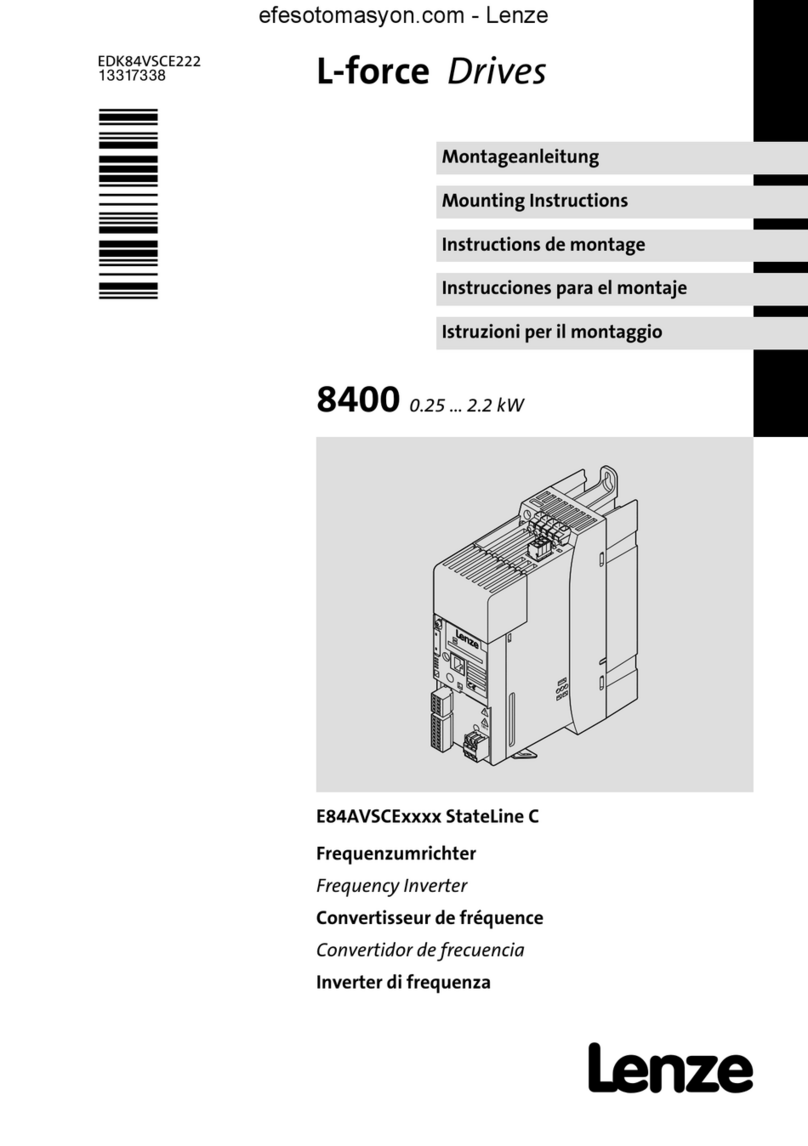
Lenze
Lenze L-force E84AVSCE StateLine C Series Mounting instructions
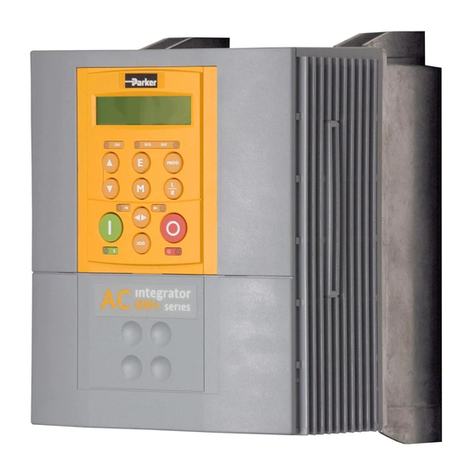
Parker
Parker 690+ series Safety & Quickstart

WEG
WEG DeviceNet CFW500 Quick setup guide
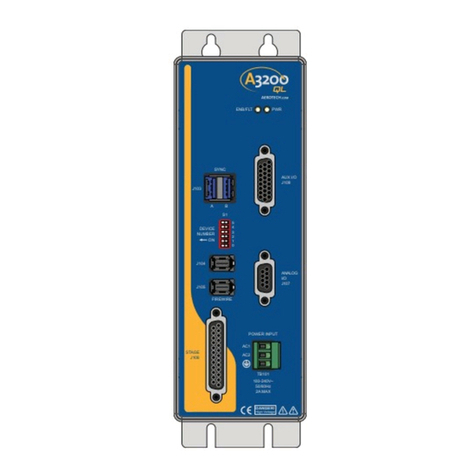
Aerotech
Aerotech Ndrive QL Series Hardware manual
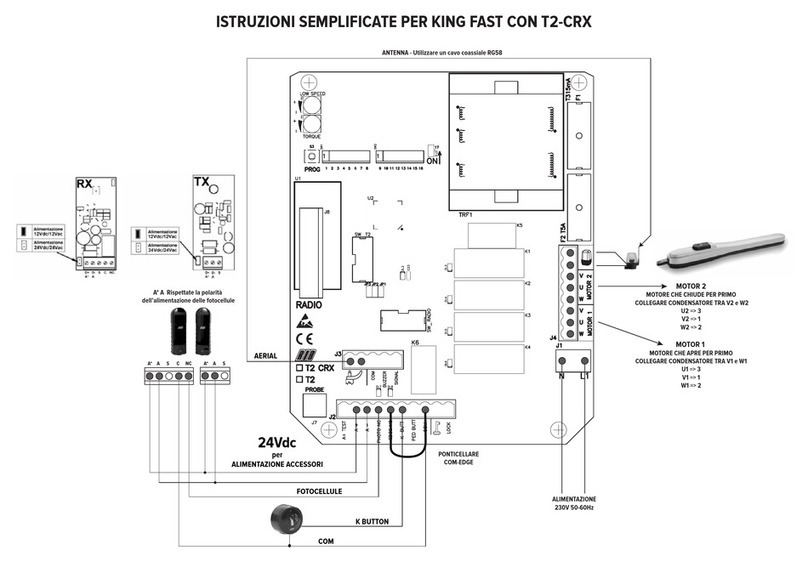
RIB
RIB KING FAST Simplified instructions
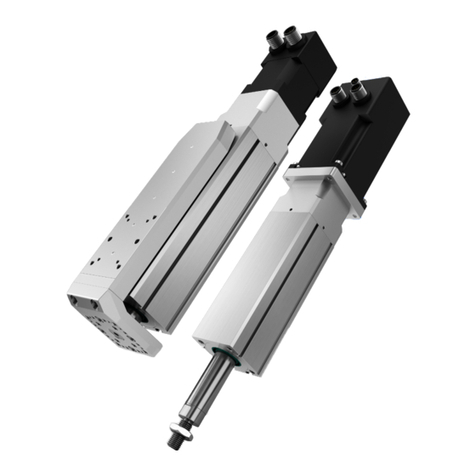
Unimotion
Unimotion MCE Assembly and maintenance instructions



